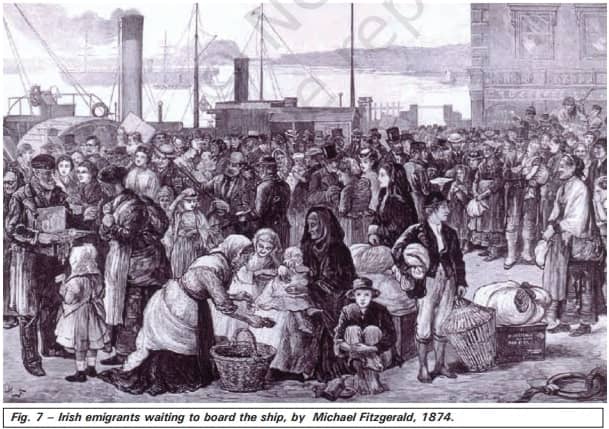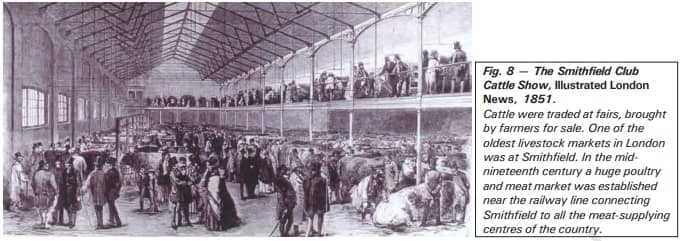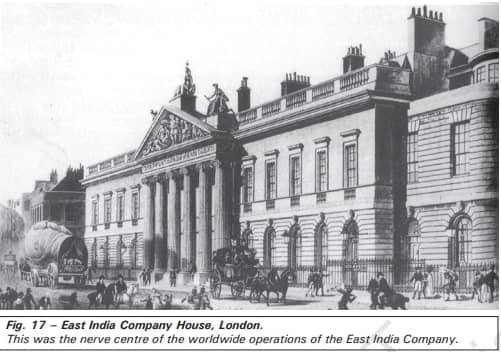The Nineteenth Century (1815 to 1914) Concept & Notes PDF for Free
Topic & sub-topics covered: The Nineteenth Century (1815 to 1914), A World Economy Takes Shape, Role of Technology, Late nineteenth-century Colonialism, Rinderpest, or the Cattle Plague, Indentured Labour Migration from India, Indian Entrepreneurs Abroad, Indian Trade, Colonialism and the Global System: The Making of a Global World (All single detail notes that are exam-oriented).
We have discussed in-depth and exam-oriented pointers that can be asked in the board exam of class 10th about “The Nineteenth Century (1815 to 1914), A World Economy Takes Shape, Role of Technology, Late nineteenth-century Colonialism, Rinderpest, or the Cattle Plague, Indentured Labour Migration from India, Indian Entrepreneurs Abroad, Indian Trade, Colonialism and the Global System” which is taken from the NCERT History book for class 10th chapter no. 3 “The Making of a Global World“.
Download NCERT History Chapter 3 Class 10th Notes PDF for Free The Making of a Global World
If you are in class 10th and looking for free NCERT History chapter 3 notes of chapter The Making of a Global World class 10 that cover concepts, then From here you can download the free class 10th History chapter 3 notes “The Making of a Global World”. You should download this free PDF for future test or exam preparations.
NCERT History Chapter 3 The Making of Global World Class 10 Notes
The Nineteenth Century (1815 to 1914)
1. Profound Changes in the Nineteenth Century:
- The nineteenth century witnessed profound changes driven by economic, political, social, cultural, and technological factors.
- Societies underwent significant transformations, and external relations were reshaped during this period.
2. Three Key Flows in International Economic Exchanges:
- Economists identify three major flows within international economic exchanges during the nineteenth century.
- These flows are trade (in goods such as cloth or wheat), labour migration, and the movement of capital for short-term or long-term investments over long distances.
3. Interconnected Nature of Flows:
- Trade, labour migration, and capital movement were closely interwoven during the nineteenth century.
- These interconnected flows had a deep impact on people’s lives, influencing societies globally.
4. Trade as the First Flow:
- The first flow, trade, predominantly involved the exchange of goods, such as textiles or agricultural products.
- This form of economic exchange played a crucial role in shaping the global economy of the nineteenth century.
5. Migration of Labor as the Second Flow:
- The second flow consisted of the migration of people in search of employment opportunities.
- Labour migration, though interconnected with trade and capital movement, often faced more restrictions.
6. Capital Movement as the Third Flow:
- The third flow focused on the movement of capital, involving both short-term and long-term investments across considerable distances.
- Capital movement played a significant role in shaping economic landscapes globally.
7. Complex Interplay of Flows:
- The three flows interacted in complex ways, influencing societies on a profound level.
- Understanding the interconnected nature of these flows is essential for a comprehensive grasp of the nineteenth-century world economy.
8. Importance of Examining Flows Together:
- Analyzing trade, labour migration, and capital movement together provides a comprehensive understanding of the dynamics of the nineteenth-century world economy.
- While each flow had its unique characteristics, their combined influence shaped the global economic landscape of the time.
A World Economy Takes Shape

1. Changing Pattern of Food Production and Consumption in Industrial Europe:
- Industrial Europe experienced a shift in food production and consumption patterns during the nineteenth century.
- Traditional self-sufficiency in food was challenged in Britain due to increased demand, population growth, and industrialization.
2. Abolition of the Corn Laws:
- The Corn Laws, restricting the import of corn, led to higher food grain prices in Britain.
- Industrialists and urban dwellers pressured the government to abolish the Corn Laws, enabling cheaper food imports.
3. Impact on British Agriculture and Employment:
- Abolishing the Corn Laws resulted in cheaper imported food, making British agriculture less competitive.
- Vast uncultivated lands and unemployment emerged as a consequence, with people migrating to cities or overseas.
4. Global Impacts of Changing Food Production:
- The abolition of the Corn Laws had global repercussions, affecting food production worldwide.
- Lands in Eastern Europe, Russia, America, and Australia expanded to meet the rising British demand for food.
5. Infrastructure Development for Agricultural Expansion:
- Railways, harbours, and settlements were crucial for linking agricultural regions to ports and facilitating food transportation.
- Capital from financial centres like London played a pivotal role in developing the required infrastructure.
6. Migration Patterns in Response to Labor Demand:
- High demand for labour, particularly in America and Australia, led to significant migration from Europe.
- Approximately 50 million people emigrated from Europe to America and Australia during the nineteenth century.
7. Formation of a Global Agricultural Economy:
- By 1890, a global agricultural economy emerged with intricate changes in labour movement, capital flows, ecologies, and technology.
- Food was no longer locally sourced, but transported from thousands of miles away, shaping a global economic landscape.
8. Impact on Punjab and the Canal Colonies:
- The British Indian government transformed semi-desert lands in west Punjab into fertile agricultural areas using irrigation canals.
- Canal Colonies attracted peasants from other parts of Punjab, showcasing the local impacts of global agricultural changes.
9. Dramatic Changes in Commodity Production:
- Similar changes occurred in producing commodities like cotton and rubber, driven by regional specialization.
- Between 1820 and 1914, world trade multiplied 25 to 40 times, with nearly 60% comprising primary products like wheat, cotton, and minerals.
10. Expansion of World Trade and Economic Specialization:
- World trade expanded rapidly, reflecting the global economic changes in the nineteenth century.
- The specialization in commodity production contributed significantly to the economic landscape.
By understanding these exam-oriented pointers, students can grasp the interconnected factors that shaped the changing food production patterns, global economy, and migration trends during the nineteenth century.
Role of Technology

1. Role of Technology in the Nineteenth Century:
- The railways, steamships, and the telegraph played pivotal roles in transforming the nineteenth-century world.
- Technological advancements were integral, shaping the global landscape and facilitating economic changes.
2. Interconnected Nature of Technological Advances:
- Railways, steamships, and the telegraph were interconnected inventions that significantly impacted global developments.
- These technologies were not isolated; they influenced and complemented each other in the transformed world.
3. Technology as a Product of Larger Factors:
- Technological progress was often a result of broader social, political, and economic factors.
- Colonization, for instance, stimulated investments leading to improvements in transport infrastructure.
4. Impact of Colonization on Technological Advances:
- Colonization stimulated new investments and advancements in transportation technology.
- Faster railways, lighter wagons, and larger ships were developed to facilitate the cost-effective movement of goods.
5. Connected Process in the Trade of Meat:
- The trade-in meat exemplifies the interconnected nature of technological and economic processes.
- Live animals were initially shipped from America to Europe, leading to inefficiencies and high costs.
6. Evolution in Meat Trade Technology:
- Till the 1870s, live animals were transported to Europe, causing various challenges and making meat expensive.
- The development of refrigerated ships revolutionized the meat trade by allowing the transport of frozen meat from the source.
7. Impact on Shipping Costs and Meat Prices:
- Refrigerated ships reduced shipping costs and facilitated the transportation of perishable foods over long distances.
- This technological advancement significantly lowered meat prices in Europe, making it more accessible to the European poor.
8. Diversification of the European Diet:
- Refrigerated ships allowed animals to be slaughtered at the source and transported as frozen meat to Europe.
- This led to a more varied diet for the European population, reducing the earlier monotony of bread and potatoes.
9. Societal Impact:
- Better living conditions resulting from improved diets promoted social peace within countries.
- The availability of affordable meat, butter, and eggs contributed to enhanced living standards and contentment.
10. Support for Imperialism:
- Improved living conditions within countries, partly due to technological advancements, contributed to support for imperialism abroad.
- Enhanced diets and social stability created a favourable environment for imperialistic endeavours.
Understanding the role of technology in the nineteenth century, especially in areas like transportation and food trade, is crucial for comprehending the broader socio-economic changes during this period.
Late nineteenth-century Colonialism





